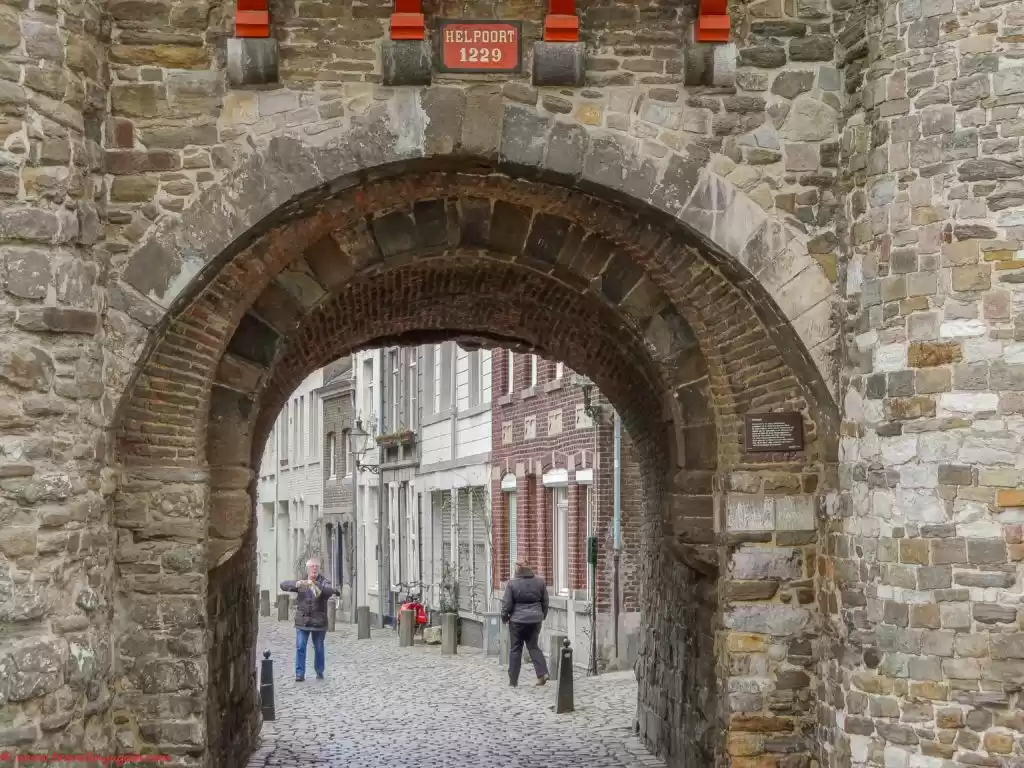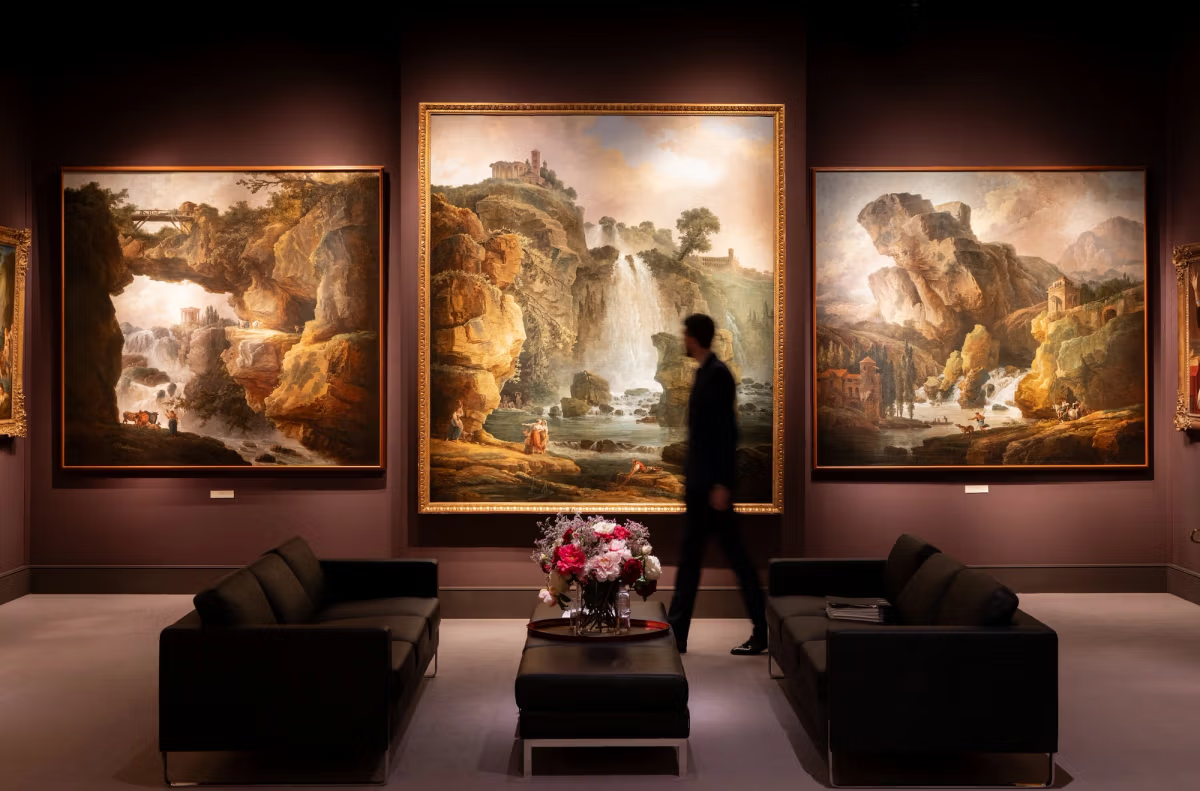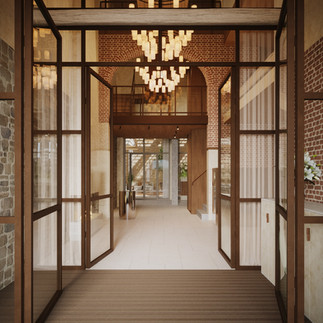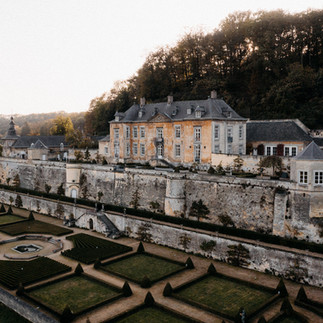Maastricht: The Ultimate Offbeat Getaway from Amsterdam
- Fernanda Matsuoka
- Apr 8
- 5 min read

There’s something undeniably cinematic about Maastricht. A city that whispers its layered history through cobbled streets and underground passageways, it’s where the Netherlands sheds its tidy, windmill-dotted image in favor of something far more mysterious and sophisticated. Here, Roman ruins, medieval fortifications, and underground wartime hideouts coexist with avant-garde art fairs, lush vineyards, and world-class concerts.
Perfectly Situated for Exploration
Located in the southernmost part of the Netherlands, Maastricht enjoys an enviable position just a stone’s throw from Belgium and Germany. Only an hour’s drive from Brussels, the city is an excellent extension for travelers exploring the heart of Europe. Its accessibility makes it ideal for those seeking a luxurious yet off-the-beaten-path escape.

A City Built on Roman Ambition
Long before Maastricht became a stylish cultural hub, it was an outpost of the Roman Empire. The name itself stems from the Latin Mosa Trajectum—the crossing at the River Meuse. By the 1st century AD, the Romans had established a bustling settlement here, leaving behind remnants of their engineering prowess, including the foundations of a bridge that once connected Maastricht to the vast Roman road network. Today, you can still see traces of their world beneath the Basilica of Our Lady, where a Roman temple once stood, a reminder that Maastricht has been a crossroads of civilization for over two millennia.
Iconic Landmarks: Where Past Meets Present
Maastricht’s allure extends beyond its tunnels and squares. The St. Servatius Bridge, the oldest bridge in the Netherlands, offers a postcard-perfect view of the Meuse River, linking the city’s historic heart with its trendy Wyck district.

Book lovers will find a hidden treasure in Boekhandel Dominicanen, a breathtaking bookstore housed inside a 13th-century Gothic church—often hailed as one of the world’s most beautiful bookstores. Meanwhile, the Basilica of Saint Servatius, a Romanesque masterpiece, stands as a testament to the city’s religious and architectural heritage, housing the relics of Maastricht’s patron saint.
Underground Mysteries: The Tunnels of Maastricht

Maastricht isn’t just fascinating above ground. Beneath the city lies a labyrinth of tunnels—vast, eerie, and steeped in history. Originally quarried for marlstone in the Roman era, these passages stretch for over 250 kilometers, linking Maastricht to Valkenburg. Over the centuries, the tunnels became an essential wartime refuge, first during the Eighty Years’ War and later during World War II, when locals and resistance fighters sought shelter from Nazi occupation. The caves are now a portal into Maastricht’s clandestine past, offering visitors a chance to wander through hand-carved walls that have borne witness to centuries of survival and secrecy.
A Witness to World War II
For history enthusiasts, Maastricht is a trove of World War II stories. The city was the first in the Netherlands to be liberated by Allied forces on September 14, 1944. Walking through the tunnels, one can almost hear the echoes of soldiers and resistance members who used these underground networks to evade capture. The American Cemetery in nearby Margraten serves as a solemn tribute to the thousands of U.S. soldiers who lost their lives in the fight for Europe’s freedom. This is history you don’t just read about—you feel it.
Situated near the German and Belgian borders, Maastricht is also an ideal base for exploring key WWII sites across the region. Just a 40-minute drive to the east lies Aachen, the first German city captured by the Allies—an essential turning point on the Western Front. To the south, in just under 1.5 hours, you can reach Bastogne, Belgium, where the Bastogne War Museum and Mardasson Memorial vividly recount the harrowing events of the Battle of the Bulge.
Additionally, a 1.5-hour drive north brings you to Overloon, home to the Overloon War Museum. Located on the site of the Battle of Overloon—the largest tank battle on Dutch soil—this museum offers an extensive collection of military vehicles and artifacts, providing profound insights into the Netherlands' wartime experiences. In this corner of the continent, the landscape itself still carries the memory of war—etched in stone, soil, and silence.
Vineyard Elegance: A Dutch Surprise
When one thinks of European wine regions, the Netherlands rarely comes to mind. But Maastricht, with its undulating hills and mineral-rich soil, has quietly been cultivating a vibrant viticultural scene. The region’s vineyards, such as the historic Apostelhoeve and Domaine Backerbosch, produce elegant white wines that rival their French and German counterparts. Wine tasting here is an experience in itself—sipping crisp Rieslings while gazing at rolling landscapes that could easily be mistaken for Burgundy or the Mosel Valley.
Where Culture and Spectacle Collide
Few cities can boast a cultural lineup as dazzling as Maastricht’s. Every July and December, the city transforms into a grand stage for André Rieu’s concerts on the Vrijthof Square. The world-famous violinist, a Maastricht native, brings an electrifying atmosphere, with waltzing crowds, Champagne-filled flutes, and an air of old-world glamour.
Then, there’s TEFAF (The European Fine Art Fair), the pinnacle of luxury and refinement in the art world. Each March, Maastricht becomes a mecca for collectors, curators, and aficionados, housing everything from Old Masters to contemporary masterpieces. The fair is more than an art event—it’s an invitation to a world where aesthetics and affluence merge effortlessly.
Christmas Magic: Maastricht & Valkenburg Markets
When winter descends, Maastricht transforms into a festive wonderland. The Magical Maastricht Christmas Market, set in the historic Vrijthof Square, is a spectacle of twinkling lights, charming wooden stalls, and an ice-skating rink. Visitors can sip mulled wine, indulge in Dutch seasonal treats, and browse artisanal crafts against the backdrop of medieval architecture.
A short drive away, Valkenburg takes Christmas markets to another level—underground. The town’s famed marl caves become the setting for Europe’s most unique Christmas market, where visitors can wander through beautifully decorated tunnels lined with festive stalls. The scent of spiced speculaas cookies fills the air, while the cave walls, adorned with centuries-old carvings, create a setting unlike any other in Europe. Together, these markets make South Limburg one of the most magical places to celebrate the holiday season.
Experience Maastricht in Unmatched Luxury
Sapiens Travel is keen to present Maastricht as one of the Netherlands' most exquisite destinations. To truly savor its elegant blend of history and modern indulgence, a stay in one of its finest hotels is non-negotiable:
Van Oys Retreat – An intimate sanctuary with modern design and personalized service. LHW property, the latest addition to the Maastricht portfolio.
Château St. Gerlach – A countryside estate offering spa indulgence and culinary excellence. Only 7 luxurious suites.
Château Neercanne – A fairytale castle with Michelin-starred dining and panoramic vineyard views.
Kruisherenhotel – A 15th-century monastery reimagined into a chic, avant-garde luxury hotel. Member of Design Hotels.
Your Invitation to Maastricht
Maastricht is a city that refuses to be rushed. It invites travelers to slow down, soak in the grandeur of its history, and indulge in its refined pleasures. Whether you’re wandering through ancient tunnels, raising a glass in a sun-drenched vineyard, or waltzing under the stars at an André Rieu concert, this city offers an experience like no other.
Sapiens Travel curates tailor-made journeys that highlight Maastricht’s timeless elegance—explore our 3-night Sample Itinerary and step into the city’s most extraordinary experiences.





















































